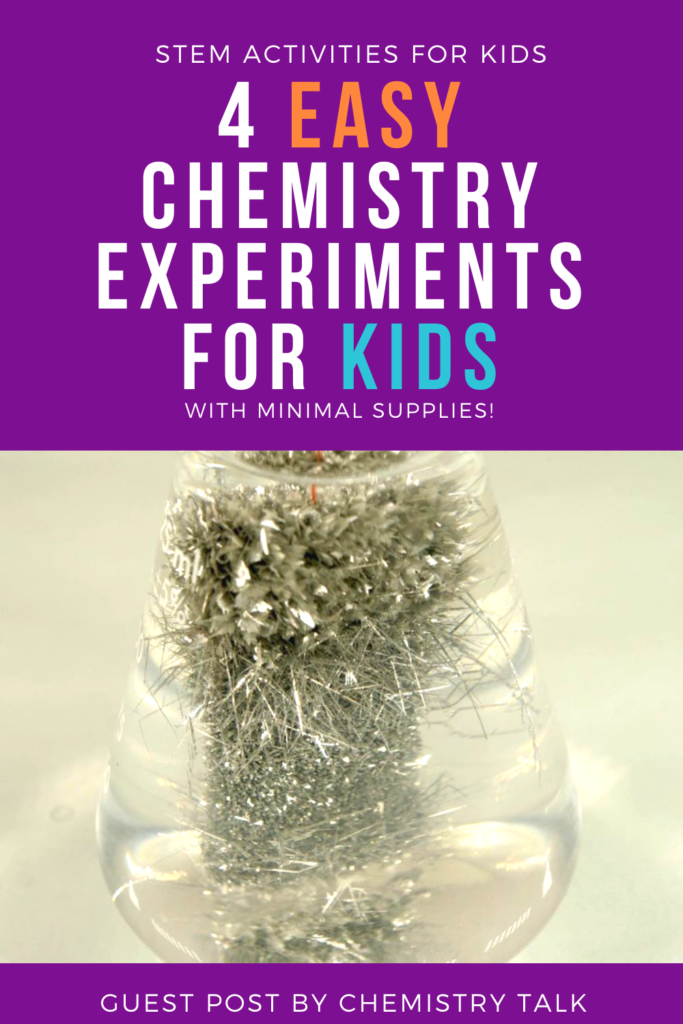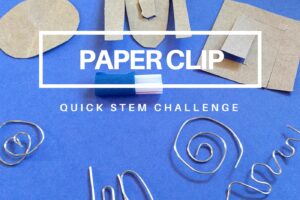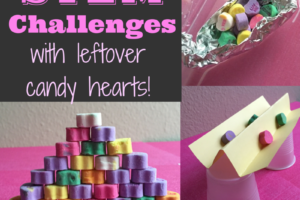This post is a guest post from Christine DeRosa of Chemistry Talk. These are four easy chemistry experiments for kids that can be done at home or in the classroom (with minimal supplies!).
All of these experiments can be completed at home without any special equipment, and are perfect for students of all ages, with the proper adult supervision. Some chemicals must be handled by parents only; make sure to read the safety guidelines carefully before embarking on your own chemistry journey.
1. DIY hand-chalk – perfect for rock climbing or gymnastics!
(video: https://youtu.be/2PV-Oh7BDy4)
In this experiment, you will synthesize a beautiful white precipitate of magnesium carbonate using non-toxic compounds that you probably have in your kitchen. You will see when you combine the Epsom salts with pure baking soda, no reaction occurs; but when you combine the Epsom salts with sodium carbonate, white magnesium carbonate precipitates! And when you are done, you can use your new compound as hand chalk for rock climbing or gymnastics!
Safety: Be careful! The oven can get hot.
What you’ll need:
- Baking soda
- Epsom Salt
- 4 clear jars or glasses
- Oven
- Funnel and coffee filter (optional)
Procedure: Follow along with our YouTube Video.
2. A bubbling reaction of Gallium and Aluminum
In this experiment, you will combine melted gallium with aluminum to create an aluminum-gallium alloy. By then adding cold water to this alloy, you will instantly produce hydrogen gas! While the aluminum is converted to aluminum hydroxide, the gallium actually does not change and can be recovered. It is the gallium that disrupts the coating that normally prevents aluminum from reacting with water.
Check out our YouTube Clip of this bubbling reaction!
(video: https://youtu.be/1Y3-plWkjwY)
Safety: This reaction can get quite hot, make sure the reaction container is cool before touching it.
What you’ll need:
- Aluminum foil
- Gallium (you can buy small amounts on eBay, Amazon, or on specialty websites)
- Cold water
Procedure:
- Place aluminum foil in a clear glass container. Add cold water. You should see that no reaction takes place.
- Melt a small amount of gallium by putting it into a water-safe container. Then, place the container into hot water to melt. (Gallium has a low melting point, 85.6°F, so the water does not need to be too hot)
- After the gallium is melted, add aluminum foil and mix. You only need a little gallium relative to the amount of foil.
- Add cold water slowly to the aluminum-gallium mixture. You will see a vigorous reaction as hydrogen gas and aluminum hydroxide are produced.
- Once the reaction is complete, allow the container to cool before disposing of the products.
3. Making Copper Powder from Aluminum Foil
(Website article: https://chemistrytalk.org/copper-powder-aluminum-foil/ Video: https://youtu.be/dlHMYxZ99Gw)
In this experiment, you will transform an ordinary kitchen item, aluminum foil, into a beautiful reddish-brown pure copper powder! When adding aluminum foil to dissolved copper sulfate, you will observe that no reaction occurs; however, with just the smallest amount of regular table salt, you will see before you eyes the aluminum foil turning into copper. Once you are done, you will have a beautiful copper powder that you can store for future experiments.
Safety: Because copper sulfate is toxic, it must be handled by adults only and stored in a place secured from kids. It is important copper sulfate is not ingested, inhaled or does not come in contact with the skin. The reaction itself can get very hot, be careful and make sure to let the reaction container cool before touching it.
What you’ll need:
- Copper Sulfate (You can find this at most hardware stores as “root killer”)
- Aluminum Foil
- Table Salt
- Warm Water
- Coffee Filter
- Funnel
- Glass Jar
- Magnetic Stirring Bar + Hot Plate (optional)
Procedure: Check out the full detailed experimental guide on our website, or follow along with our YouTube Video!
4. Make Beautiful Silvery Tin Crystals
(video: https://youtu.be/xGVMcYP1fE8 article: https://chemistrytalk.org/tin-crystals-tin-chloride/)
In this experiment, you will produce beautiful needle-like silver tin crystals from tin chloride and solid zinc. You will combine tin chloride with water which will create a solution that may get cloudy. For a more advanced experiment, you can add a little acid, such as sodium bisulfate, lemon juice, or vinegar to help stabilize the solution before adding the zinc. You can even leave the crystals in the jar for as long as a week to admire the crystals everyday. Once you are done, you can dry your tin and store it as part of your new element collection.
Safety: Tin chloride is slightly toxic and should only be handled by adults. It can irritate the skin and eyes, and should not be ingested or handled. Dust from tin crystals can be irritating to the skin and lungs.
What you’ll need:
- Tin(II) Chloride (You can purchase on Ebay or other specialty stores)
- Water
- Zinc (You can purchase on Amazon, Ebay, or other specialty stores)
- Coffee filter and Funnel
- Sodium Bisulfate, vinegar, or lemon juice (not required but helps to keep the solution clear)
Procedure: Check out the full experiment guide and follow along with our YouTube Video.
What easy chemistry experiments have you tried with kids? Let us know in the comments!
Pin these ideas for later:





Leave a Reply
Your email is safe with us.